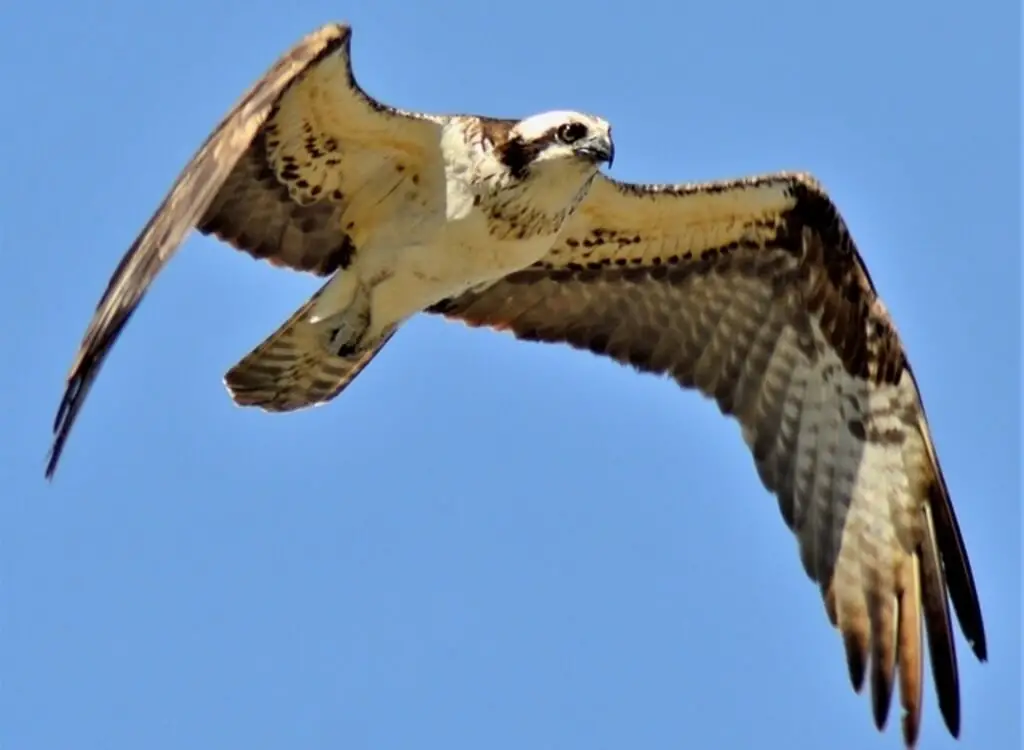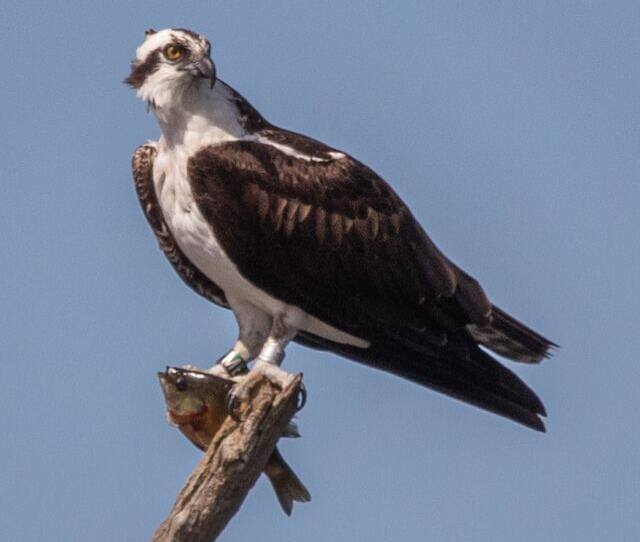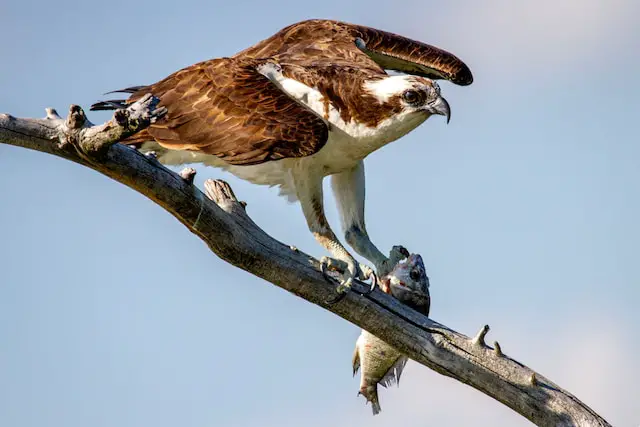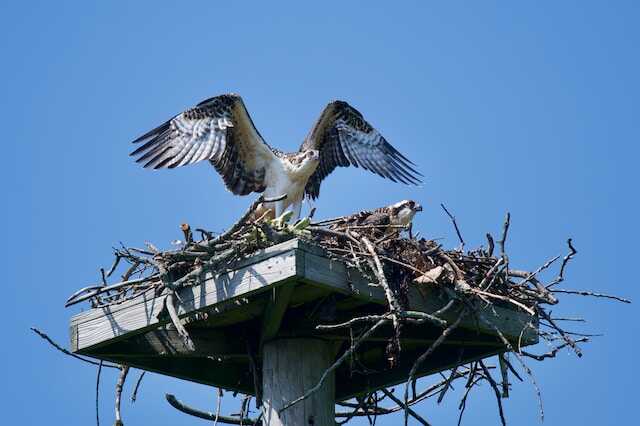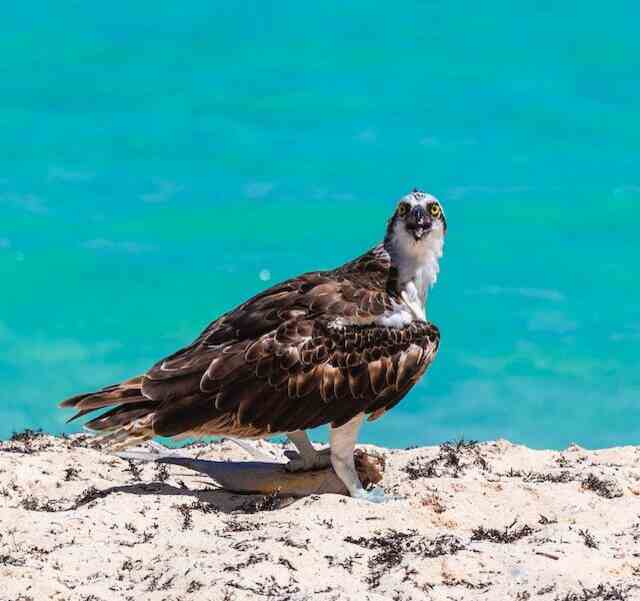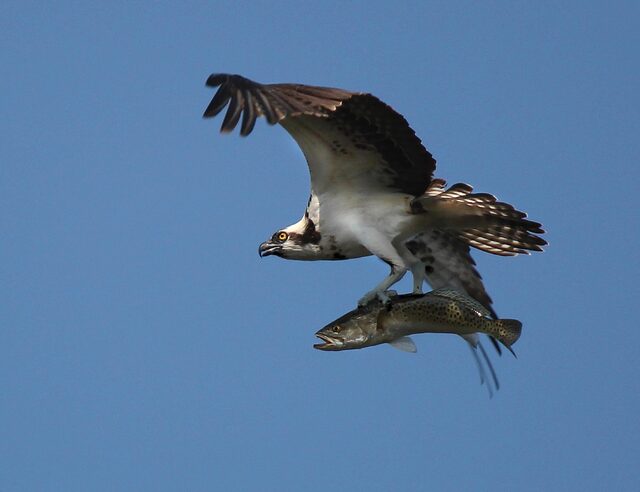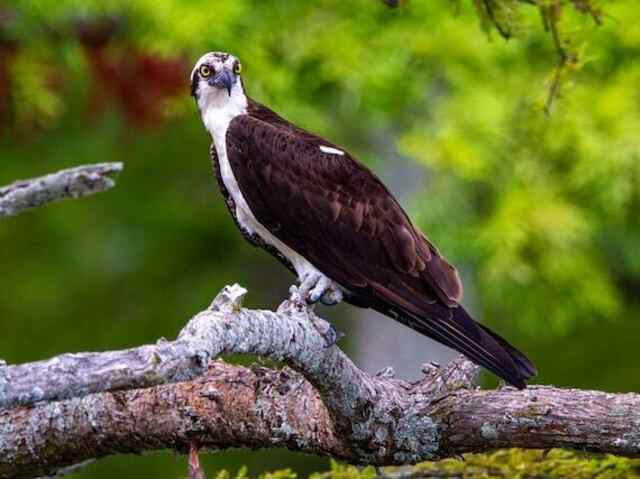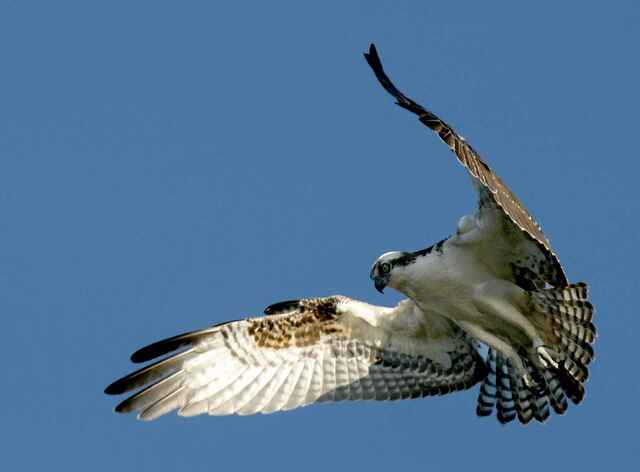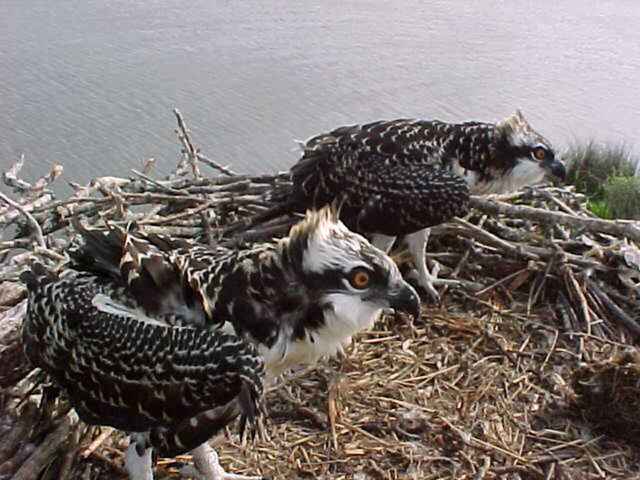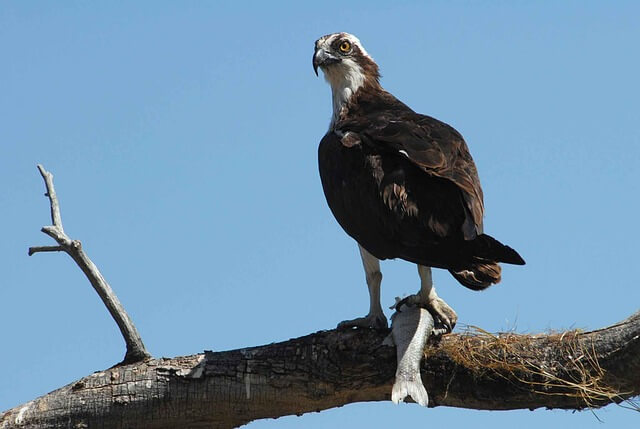Looking for a good laugh and some feather-ruffling facts? Look no further than 69 Fun Facts About Ospreys! From their impressive wingspan to their unique hunting techniques, these birds are a true marvel of nature. Buckle up and get ready to learn all about these fascinating creatures!
Table of Contents
- 1 Fun Facts About Ospreys
- 1.1 Osprey (Overview)
- 1.2 Ospreys have a unique nesting style
- 1.3 Ospreys are migratory birds
- 1.4 Ospreys can be found near both saltwater and freshwater
- 1.5 Ospreys have a high success rate when hunting
- 1.6 Ospreys can carry fish that are up to 50% of their own body weight
- 1.7 Ospreys are important to Native American cultures
- 1.8 Ospreys have a unique way of carrying their prey in flight
- 1.9 Ospreys have a unique migratory pattern
- 1.10 Ospreys are not typically aggressive towards humans
- 1.11 Ospreys have a unique way of attracting mates
- 1.12 Ospreys are important to the ecosystem
- 1.13 Ospreys can be found in a variety of colors
- 1.14 Ospreys have a unique way of communicating with their mates
- 1.15 Ospreys have been known to form long-lasting bonds with their offspring
- 1.16 Ospreys have been known to form non-reproductive bonds with other birds
- 1.17 Ospreys can live in urban environments
- 1.18 Ospreys have a unique way of carrying sticks to their nests
- 1.19 Ospreys have a unique way of shaking off excess water
- 1.20 Ospreys have unique mating rituals
- 1.21 Ospreys have been studied extensively
- 1.22 Ospreys are an important subject for conservation efforts
- 1.23 Ospreys are able to tolerate a wide range of temperatures
- 1.24 Ospreys have a unique way of seeing the world
- 1.25 Ospreys are a symbol of resilience
- 1.26 Ospreys have a unique hunting style
- 1.27 Ospreys are monogamous
- 1.28 Ospreys have a distinctive call
- 1.29 Ospreys inhabit all continents of the world except for Antarctica.
- 1.30 Ospreys are diurnal
- 1.31 Ospreys are powerful fliers
- 1.32 Ospreys have specially adapted eyes
- 1.33 Ospreys are not true eagles
- 1.34 Ospreys are not kept in captivity
- 1.35 Ospreys are important predators
- 1.36 Ospreys are sensitive to environmental pollution
- 1.37 Ospreys are excellent swimmers
- 1.38 Ospreys are adaptable
- 1.39 The wingspan of an osprey can extend up to six feet
- 1.40 Ospreys have a powerful grip
- 1.41 Ospreys are used in research
- 1.42 Ospreys are sometimes referred to as sea hawks or fish eagles
- 1.43 Ospreys can carry their prey in a unique way
- 1.44 Ospreys are not strong enough to carry off large mammals
- 1.45 Ospreys are a popular subject for photography and birdwatching
- 1.46 Ospreys have a powerful digestive system
- 1.47 Ospreys have a unique ability to shake water off their feathers in mid-air
- 1.48 Ospreys are important indicators of environmental health
- 1.49 Habitat and Distribution
- 1.50 Talons and Hunting
- 1.51 Migratory Patterns
- 1.52 Ospreys are known for their unique diving ability
- 1.53 Reproduction
- 1.54 Ospreys nest in colonies.
- 1.55 They have talons as long as 3″ inches!
- 1.56 The length of an Osprey ranges from 21 to 23″ inches.
- 1.57 The average Osprey is 2 feet tall and 3 pounds in weight.
- 1.58 The wingspan of an Osprey is 5–6 feet wide.
- 1.59 The Osprey’s lifespan is between 15–30 Years.
- 1.60 Osprey eggs take approximately 35-43 days to hatch.
- 1.61 There are 460,000 Ospreys worldwide.
- 1.62 Their flight speed is 30 to 40 miles per hour.
- 1.63 Ospreys catch their prey by swooping down from the sky.
- 1.64 Female Ospreys are typically larger than males.
- 1.65 Ospreys live in all 50 states of America and even Canada.
- 1.66 Ospreys eat primarily fish.
- 1.67 Their feathers mostly waterproof.
- 1.68 Ospreys have true color vision.
- 1.69 They have 4 toes on each foot.
- 2 Conclusion
- 3 Author
Fun Facts About Ospreys
Osprey (Overview)
| Characteristic | Description |
|---|---|
| Coloration | Brown upperparts, white underparts, distinctive black eye stripe, and a white head with a dark crown. The bill is black and hooked, and the feet are also black. |
| Size and Weight | Females are larger than males. Females typically weigh up to 4.5 pounds (2.0 kg), while males weigh around 3.1 pounds (1.4 kg). Both males and females can be up to 23 inches (58 cm) in length. |
| Wingspan | Female Ospreys can have a wingspan of up to 6 feet (1.8 m), while males typically have a wingspan of up to 5 feet (1.5 m). |
| Diet | Fish is the primary food source of Ospreys. They are specialized hunters and can dive up to 100 feet (30 m) into the water to catch fish. They are also known to occasionally feed on small mammals, birds, and reptiles. |
| Habitat | Ospreys are found on every continent except Antarctica. They prefer to nest near bodies of water such as rivers, lakes, and coastlines. |
| Breeding | Ospreys typically mate for life and return to the same nesting site each year. Females lay 2-4 eggs, and both parents share incubation duties. Chicks hatch after around 5 weeks and are fledged after around 8-10 weeks. |
| Scientific Name | Pandion haliaetus |
Ospreys have a unique nesting style
Ospreys nest in tall structures like trees, utility poles, and man-made platforms. Their nests are often huge and can weigh up to a ton.
Ospreys are migratory birds
Ospreys are migratory birds that follow the fish they feed on as they move in response to changing water temperatures.
Ospreys can be found near both saltwater and freshwater
Ospreys are found near both saltwater and freshwater habitats, making their nests near rivers, lakes, and coastal regions.
Ospreys have a high success rate when hunting
Ospreys have a high success rate when hunting, catching fish on around 25% of their dives.
Ospreys can carry fish that are up to 50% of their own body weight
Ospreys are powerful birds that can carry fish that are up to 50% of their own body weight. This is due in part to their unique wing anatomy.
Ospreys are important to Native American cultures
Ospreys have played an important role in Native American cultures throughout history, with some tribes considering them to be sacred birds.
Ospreys have a unique way of carrying their prey in flight
Ospreys have a unique way of carrying their prey in flight, with their catch turned headfirst to reduce wind resistance and make flying easier.
Ospreys have a unique migratory pattern
Ospreys have a unique migratory pattern, with populations in North America migrating to Central and South America during the winter months.
Ospreys are not typically aggressive towards humans
Ospreys are not typically aggressive towards humans, although they may become defensive if they feel their nest is being threatened.
Ospreys have a unique way of attracting mates
Ospreys have a unique way of attracting mates, with males performing aerial displays and bringing gifts like sticks and fish to their potential mates.
Ospreys are important to the ecosystem
Ospreys are important to the ecosystem, not only as top predators, but also as providers of nesting sites for other bird species.
Ospreys can be found in a variety of colors
Ospreys can be found in a variety of colors, from dark brown to white, depending on their age and geographic location.
Ospreys have a unique way of communicating with their mates
Ospreys have a unique way of communicating with their mates, with pairs engaging in elaborate courtship displays involving calls, aerial displays, and gift-giving.
Ospreys have been known to form long-lasting bonds with their offspring
Ospreys have been known to form long-lasting bonds with their offspring, with some parent birds returning to their nests to visit their grown children for years after they have left the nest.
Ospreys have been known to form non-reproductive bonds with other birds
Ospreys have been known to form non-reproductive bonds with other birds of the same sex, with these same-sex pairs often sharing a nest and raising chicks together.
Ospreys can live in urban environments
Ospreys can live in urban environments, with some birds even nesting on skyscrapers and other tall structures in large cities.
Ospreys have a unique way of carrying sticks to their nests
Ospreys have a unique way of carrying sticks to their nests, with the stick held in one talon while they are in flight.
Ospreys have a unique way of shaking off excess water
Ospreys have a unique way of shaking off excess water after diving into the water to catch fish, with the bird shaking its feathers rapidly to remove water droplets.
Ospreys have unique mating rituals
Ospreys have unique mating rituals that involve the male offering the female a fish as a gift before they mate.
Ospreys have been studied extensively
Ospreys have been studied extensively by scientists, who have used satellite tracking to monitor their migratory patterns and behavior.
Ospreys are an important subject for conservation efforts
Ospreys are an important subject for conservation efforts, with many organizations working to protect their habitats and monitor their populations.
Ospreys are able to tolerate a wide range of temperatures
Ospreys are able to tolerate a wide range of temperatures, with some populations living in Arctic regions where temperatures can drop to -40 degrees Celsius.
Ospreys have a unique way of seeing the world
Ospreys have a unique way of seeing the world, with their eyes able to detect polarized light, allowing them to navigate based on the position of the sun and other celestial bodies.
Ospreys are a symbol of resilience
Ospreys are seen as a symbol of resilience, with their populations having rebounded in recent years after being impacted by pollutants and habitat loss.
Ospreys have a unique hunting style
Ospreys have a unique hunting style that involves hovering over the water and then diving feet-first to catch their prey. They can dive up to 100 feet into the water to catch fish.
Ospreys are monogamous
Ospreys are monogamous and mate for life. They return to the same nesting site year after year and will often add to their nest over time.
Ospreys have a distinctive call
Ospreys have a distinctive call that sounds like a loud, whistling whistle. They use this call to communicate with their mates and other birds.
Ospreys inhabit all continents of the world except for Antarctica.
Ospreys inhabit all continents of the world except for Antarctica. They are migratory birds and can travel up to 160,000 kilometers in their lifetime.
Ospreys are diurnal
Ospreys are creatures that are active during the day, known as diurnal animals. They hunt for fish during the day and roost at night.
Ospreys are powerful fliers
Ospreys are powerful fliers and can reach speeds of up to 50 miles per hour. They can fly for extended periods without the need to land.
Ospreys have specially adapted eyes
Ospreys have specially adapted eyes that allow them to see underwater. They are able to spot fish from high in the air and then dive down to catch them.
Ospreys are not true eagles
Ospreys are not true eagles, but are part of the family Accipitridae, which includes eagles, hawks, and kites.
Ospreys are not kept in captivity
Ospreys are not typically kept in captivity due to their specialized dietary and environmental needs.
Ospreys are important predators
Ospreys are important predators in their ecosystems and play a key role in controlling populations of fish.
Ospreys are sensitive to environmental pollution
Ospreys are sensitive to environmental pollution, and their populations have been impacted by the use of pesticides and other chemicals.
Ospreys are excellent swimmers
Ospreys are excellent swimmers and can swim short distances to shore if necessary.
Ospreys are adaptable
Ospreys are highly adaptable and can survive in a variety of environments, from saltwater to freshwater to estuaries.
The wingspan of an osprey can extend up to six feet
The wingspan of an osprey can extend up to six feet. They have a unique wingspan-to-bodyweight ratio that is higher than any other bird of prey.
Ospreys have a powerful grip
One of the unique features of Ospreys is their ability to grasp their prey with two toes pointing forward and two pointing backward, thanks to their reversible outer toes. This unique grip helps them to hold onto their slippery fish prey.
Ospreys are used in research
Ospreys are often used in research to study migratory patterns and environmental impact. An important function that they serve is to indicate the health of the environment.
Ospreys are sometimes referred to as sea hawks or fish eagles
Ospreys are sometimes referred to as sea hawks or fish eagles. They are also known as fish hawks because they primarily eat fish.
Ospreys can carry their prey in a unique way
Ospreys have a unique way of carrying their prey, with one foot in front and one foot in back to reduce air resistance. This helps them to fly more efficiently.
Ospreys are not strong enough to carry off large mammals
Ospreys are not strong enough to carry off large mammals like deer or livestock. They primarily eat fish, although they may occasionally eat other small prey.
Ospreys are a popular subject for photography and birdwatching
Many wildlife enthusiasts enjoy capturing images of and observing ospreys, as they are highly sought-after subjects for both photography and birdwatching. These magnificent birds are not only stunning to look at, but also hold a great deal of interest for those who admire them.
Ospreys have a powerful digestive system
Ospreys have a digestive system that allows them to digest bones, feathers, and other tough materials. Their stomachs contain strong acids and enzymes that break down their food, allowing them to extract nutrients from even the toughest prey.
Ospreys have a unique ability to shake water off their feathers in mid-air
Ospreys have a unique ability to shake water off their feathers in mid-air. This helps them to dry off quickly after diving into the water.
Ospreys are important indicators of environmental health
Ospreys are often used as indicators of environmental health, as they are at the top of the food chain and can be impacted by changes in their environment.
Habitat and Distribution
Ospreys are found on all continents except Antarctica, but their distribution across continents is uneven. While they do not inhabit every region of the continents they occur on, they are typically found in areas with many trees and a nearby shallow water source. Some populations choose to nest in colonies on cliffs or man-made structures.
Talons and Hunting
Ospreys have distinctive talons that measure up to 3 inches in length. They use their sharp claws to grasp fish while hunting, which is their primary food source. These large birds of prey hover over water and dive feet first to catch fish in their talons before returning to their perch.
Migratory Patterns
Migratory patterns vary among osprey populations, with some being migratory and others being permanent residents. In North America, about 60% of the population is migratory, while in Australia and New Zealand, most populations are permanent residents. Migration for populations on other continents varies between 20-50%.
Ospreys are known for their unique diving ability
Ospreys are also known as fish hawks because they primarily eat fish. They have a unique diving ability, allowing them to dive up to 3 feet deep into water to catch fish. They use their sharp talons to grasp the fish and then carry it headfirst to reduce air resistance while flying.
Reproduction
Ospreys typically mate for life and return to the same nesting site annually. They build their nests with sticks and then line them with softer materials. These large birds of prey lay 2–4 eggs in their nests, which take about 5–6 weeks to hatch. Once hatched, the young ospreys stay in the nest for 8–10 weeks before fledging and learning to fly.
Ospreys nest in colonies.
These birds typically nest in areas with many trees and a shallow water source nearby. However, some osprey populations choose to nest in colonies with other ospreys on cliff sides, islands, man-made structures, and utility poles instead of individually.
They have talons as long as 3″ inches!
Ospreys are large birds of prey that have talons as long as 3 inches. The osprey is the only raptor to use its talons differently than most other birds.
They use their claws for grasping fish, rather than hunting them on land like most other raptors do.
The osprey will hover over the water and dive feet first into the water with its wings outstretched to grab a fish before returning to its perch.
The length of an Osprey ranges from 21 to 23″ inches.
The length of an osprey ranges from 21 to23″ inches, which is approximately 1.8-2 feet. The measurement is the distance from the tip of its beak to the end of its tail feathers.
The average Osprey is 2 feet tall and 3 pounds in weight.
The average size and weight of an osprey can vary slightly depending on the specific population being considered, but in general, ospreys have an average length of 21–23 inches (about 1.8-2 feet), a height of a few inches when standing, and a wingspan of 5–6 feet.
They typically weigh between 3 and 4.4 lbs (1.4 to 2 kg). Ospreys are a cosmopolitan species of bird of prey and are known for their fish-eating habits.
They are considered one of the larger birds of prey, but are smaller than bald eagles 1. Overall, they have a distinctive appearance with short tails, long wings, and white undersides.
The wingspan of an Osprey is 5–6 feet wide.
The wing span for these birds ranges from 5 to 6 feet across, making them able to fly over large distances without getting tired.
The Osprey’s lifespan is between 15–30 Years.
They have a lifespan between 15–30 years, and they usually only live about 10% of their lives on land.
Osprey eggs take approximately 35-43 days to hatch.
Osprey eggs take approximately 35–43 days to hatch, which is longer than any other North American bird species.
This is because they have the highest yolk-to-albumen ratio, which takes more time for all the nutrients to reach the embryo and encourage it to develop into a healthy baby osprey.
The osprey lays their eggs on a cliff or some other high place where they are in proximity to the water so that the parents can feed themselves and their young without having to fly too far.
There are 460,000 Ospreys worldwide.
The global population of osprey is estimated at 460,000 individuals, with one third of them living in North America.
Their flight speed is 30 to 40 miles per hour.
Ospreys are not usually considered to be high-speed flyers, but they can fly at speeds up to 30-40 miles per hour.
The osprey’s flight speed varies depending on its hunting strategy and what it is carrying. They have been clocked as high as 50 miles per hour while in a dive.
Ospreys catch their prey by swooping down from the sky.
Ospreys are a type of bird that have the unusual hunting strategy of swooping down from the sky onto their prey. They are often seen soaring high in the sky above lakes and rivers, scanning for their next meal.
They use these tactics to catch fish, but they can also be seen catching small birds and rodents.
Female Ospreys are typically larger than males.
In Ospreys, females are typically larger than males. Female Ospreys can weigh up to 4.5 pounds (2.0 kg) and have a wingspan of up to 6 feet (1.8 m), while males typically weigh around 3.1 pounds (1.4 kg) and have a wingspan of up to 5 feet (1.5 m). However, there can be some individual variation in size between males and females.
Ospreys live in all 50 states of America and even Canada.
The osprey is a large bird of prey that lives in all 50 states and even Canada. The osprey is found on both coasts of the United States, and throughout the country’s interior.
In general, these birds prefer living near freshwater sources such as lakes or rivers, but they can also be found along coastlines and saltwater estuaries.
Ospreys eat primarily fish.
Ospreys are an aquatic bird that eat primarily fish. The osprey diet includes perch, bass, trout, sunfish and other freshwater fish. In addition to these fish, they also feed on crustaceans such as crayfish and crabs.
They will also prey on rodents, amphibians like frogs and salamanders, and will occasionally scavenge for dead animals as well.
Their feathers mostly waterproof.
Their feathers are mostly waterproof, because they preen themselves when they get wet, which means that they clean their feathers by running their beak through them.
When they preen themselves, they take up secretions from the preen gland, making their feather waterproof, but with extended exposure to heavy rain, it will make their feathers too wet for them to be able to fly.
Ospreys have true color vision.
Ospreys are one of the few birds with true color vision and can see ultraviolet light. This is because they have four types of cone cells in their eyes, which allow them to see a wider range of colors than most other animals on Earth.
The osprey’s sense of sight is crucial for hunting fish, because they can see blood in the water. These raptors have four types of cones, three different photopigments that sense short wavelengths (blue), medium wavelengths (green) and long wavelengths (red).
This means that they have a wider range of colors than humans do, but cannot see as many shades within each category. This is due to the osprey’s yellow retina, which produces these colors more effectively than other animals’ retinas.
They have 4 toes on each foot.
The Osprey has four toes on each foot, which helps them grip onto things. This is one of the reasons they are such great hunters. Osprey feet are also called talons because they help them catch their prey.
These birds have three toes pointing forward and one pointing backward, the front three can be used to grip while the back toe serves as a balance point for when they’re soaring in the air.
Conclusion
In conclusion, Ospreys are fascinating birds that are known for their impressive hunting skills and unique nesting habits. With their distinctive appearance and impressive wingspan, they are a familiar sight near bodies of water around the world.
Ospreys are also known for their specialized diet of fish, which they catch by diving into the water from impressive heights. Their long-term mating habits and commitment to returning to the same nesting site each year make them a symbol of loyalty and fidelity in many cultures.
Overall, Ospreys are an important and intriguing species that continue to capture the attention of bird enthusiasts and nature lovers everywhere.
Related Post: 12 Birds of Prey That Eat Fish (with Photos, ID & Info)

